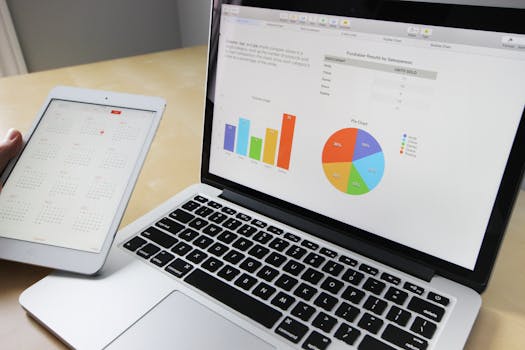What is productivity analysis?

What is productivity analysis?
In today’s fast-paced world, understanding how to optimize work processes has never been more crucial. Productivity analysis is the tool that allows individuals and organizations to assess their efficiency and effectiveness. By examining the ways we work, we can identify areas for improvement, maximize resource utilization, and ultimately achieve our goals more effectively. Whether you’re a student trying to balance studies and life or a professional striving for career advancement, productivity analysis can be your guiding light.
Defining Productivity Analysis
Productivity analysis involves systematically evaluating how efficiently resources are utilized to achieve specific outcomes. This analysis seeks to understand the relationship between inputs, such as time and materials, and outputs, such as completed tasks or products. The primary objectives include identifying inefficiencies, improving workflows, and enhancing overall performance.
What is Productivity?
At its core, productivity measures how effectively you convert inputs into outputs. In personal settings, this could mean how well you manage your time to accomplish tasks, while in an organizational context, it refers to the output generated by employees relative to the hours worked. For instance, if a factory produces 100 units of a product in 10 hours, its productivity can be assessed by calculating the units produced per hour.
The Purpose of Productivity Analysis
The main goals of conducting a productivity analysis are manifold. First, it helps identify bottlenecks—those pesky delays that hinder progress. Second, it allows for better resource allocation by pinpointing where time and effort are best spent. Lastly, it provides a framework for setting realistic and achievable goals. With tools like Harvard Business Review’s guide to measuring productivity, you can begin to explore how to apply these principles.
Methods of Conducting Productivity Analysis
Conducting a productivity analysis requires the right methods and tools. By employing both quantitative and qualitative techniques, you can gain a comprehensive understanding of productivity levels.
Quantitative Analysis Techniques
Quantitative analysis relies on numerical data to measure productivity. Common metrics include:
- Output per hour: This metric assesses how many units of work are completed in one hour.
- Efficiency ratios: These ratios compare actual performance against potential performance.
- Statistical methods: Techniques like regression analysis can uncover trends and correlations in data.
Employing these metrics allows for objective assessment, guiding decisions based on concrete numbers rather than intuition.
Qualitative Analysis Techniques
While numbers tell part of the story, qualitative methods provide context. Techniques such as:
- Surveys: Gathering employee feedback can reveal insights on bottlenecks and challenges.
- Interviews: Conversations with team members can uncover underlying issues affecting productivity.
- Observational studies: Watching workflows in real time can identify inefficiencies that might not be apparent through data alone.
These methods enrich your understanding of productivity, offering a holistic view of performance.
Software Tools for Productivity Analysis
In the digital age, various software tools can assist in productivity analysis. Popular options include:
- Trello: This project management tool helps users visualize tasks and timelines.
- Asana: A flexible tool for tracking project progress and team responsibilities.
- Time tracking apps: Tools like Toggl enable you to monitor how time is spent on tasks.
Using these tools can simplify the data collection process, making it easier to analyze productivity.
Benefits of Productivity Analysis
Implementing productivity analysis offers numerous advantages, both personally and professionally.
Improved Time Management
One of the most significant benefits of productivity analysis is enhanced time management. By identifying bottlenecks, you can streamline processes and focus on high-priority tasks. This leads to a more efficient workday and less wasted time.
Enhanced Goal Setting
Analyzing productivity helps clarify what you want to achieve. With concrete data, you can set realistic, measurable goals. This structured approach to goal setting fosters motivation and accountability.
Informed Decision Making
Insights gained from productivity analysis allow for better decision-making. Whether it’s reallocating resources or adjusting workflows, having data at your fingertips ensures that you’re making informed choices rather than guessing. Such strategic thinking is crucial for success in any endeavor.
Challenges in Productivity Analysis
While productivity analysis is beneficial, it’s not without its challenges.
Data Collection Issues
Accurate data collection is often the first hurdle. Gathering reliable information can be complicated, especially if team members are resistant to tracking their time or tasks. To overcome this, fostering a culture that values transparency and open communication is key.
Interpreting Results
Once data is collected, interpreting it can be challenging. It’s essential to apply the right statistical methods to ensure accurate insights. Engaging with resources like the Journal of Productivity Analysis can provide guidance on best practices.
Resistance to Change
Implementing changes based on productivity analysis can meet resistance from team members or leadership. To address this, it’s helpful to communicate the benefits clearly and involve everyone in the process. Change is often easier to embrace when stakeholders understand the positive impact on their work.
The Future of Productivity Analysis
As we look ahead, productivity analysis will continue to play a vital role in personal and professional growth. By adopting these strategies, you can unlock new levels of efficiency and effectiveness. The ongoing evolution of technology will also enhance our ability to conduct detailed analyses, making it easier to adapt and thrive.
Incorporating productivity analysis into your routine is more than a task; it’s a commitment to continuous improvement. Embrace the journey, and watch how your efforts lead to meaningful progress in both your personal and professional life.